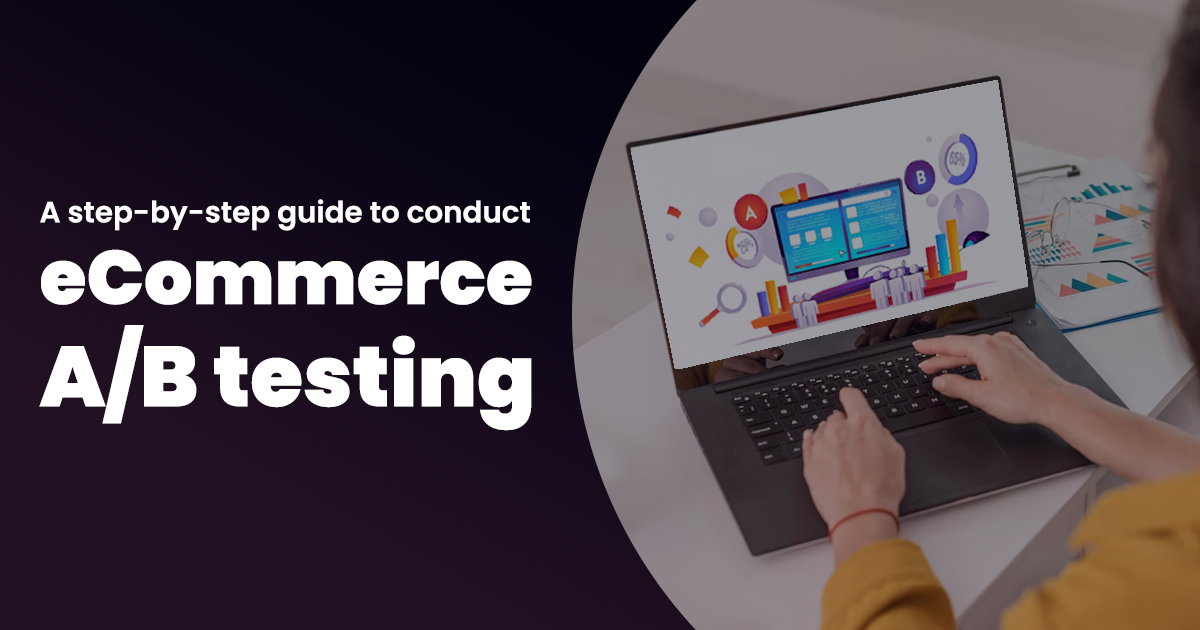A Step-By-Step Guide To Conduct eCommerce A/B Testing

As an eCommerce expert, one of the most powerful tools in your arsenal is A/B testing. A/B testing is the process of testing two different versions of a web page to see which one performs better.
By testing different elements of your eCommerce website, you can optimize your website to increase conversion rates, improve user experience, and ultimately drive more sales.
In this article, we’ll walk you through a step-by-step guide to conducting eCommerce A/B testing.
Step 1: Identify Areas Where Your Site Needs Improvement
The first step in conducting an A/B test is to identify the areas of your site that need improvement.
This could be anything from your homepage to your product pages to your checkout process.
The best way to identify areas for improvement is to analyze your website analytics and look for areas with high bounce rates, low conversion rates, or low engagement rates.
Step 2: Define Your Hypothesis
Once you’ve identified the areas of your site that need improvement, the next step is to define your hypothesis.
Your hypothesis is the assumption you’re making about what will improve the performance of your site.
For example, if you think that changing the colour of your call-to-action button will increase conversions, your hypothesis might be “changing the colour of the call-to-action button from green to red will increase conversions by 10%.”
Step 3: Determine Your Test Variations
After you’ve defined your hypothesis, the next step is to determine your test variations. Your test variations are the different versions of your site that you’ll be testing against each other.
For example, if your hypothesis is that changing the colour of your call-to-action button will increase conversions, you might create one version of your site with a green call-to-action button and another version with a red call-to-action button.
Step 4: Decide Your Testing Tool
There are many different A/B testing tools available, and the right one for your eCommerce site will depend on your specific needs.
Some popular A/B testing tools include Google Optimize, VWO, Optimizely, and Adobe Target. When choosing a testing tool, consider factors such as ease of use, cost, and the features that you need.
Step 5: Set Up Your A/B Test
After selecting your preferred testing tool, the following step is to establish your A/B test.
This will require generating various test versions, configuring your testing tool to monitor conversions, and verifying that the intended audience is exposed to the test versions.
It’s crucial to confirm that a statistically significant sample size views the test versions to ensure the validity of the outcomes.
Step 6: Run Your Test
Once your A/B test is set up, it’s time to run your test. Your testing tool will track conversions and provide you with data on which variation of your site is performing better.
It’s important to let your test run for enough time to ensure that you’re collecting enough data to make an informed decision.
Step 7: Analyze Your Results
After your test is complete, it’s time to analyze your results. Look at the data provided by your testing tool to see which variation of your site performed better.
If your hypothesis was correct and your test variation outperformed your control, you can implement the changes on your site.
If your hypothesis was incorrect and your control performed better, you can use this information to refine your hypothesis and try again.
Step 8: Repeat The Process
A/B testing is an ongoing process, and it’s important to continue testing and optimizing your site to ensure that you’re always improving performance.
Repeat the process by identifying areas for improvement, defining your hypothesis, creating test variations, and running your test.
By continually testing and refining, you can ensure that your eCommerce site is always performing at its best and driving maximum sales.
Step 9: Expand Your Testing
Once you’ve become comfortable with A/B testing, you can expand your testing to include more complex elements of your eCommerce site.
For example, you might test different product descriptions, product images, or even your entire checkout process.
The key is to start with simple tests and work your way up to more complex tests as you become more experienced.
Step 10: Use Data to Drive Decision-Making
Throughout the A/B testing process, it’s important to use data to drive decision-making. By tracking key metrics such as conversion rates, bounce rates, and engagement rates, you can make informed decisions about how to optimize your eCommerce site.
It’s also important to keep track of the changes you’ve made and the results you’ve achieved so that you can learn from your successes and failures and continually improve your site.
Conclusion
A/B testing is a powerful tool that can help eCommerce businesses optimize their website for maximum performance.
By identifying areas for improvement, defining hypotheses, creating test variations, and analyzing results, you can continually refine your eCommerce site to drive more sales and improve user experience.
By using data to drive decision-making and continually testing and refining, you can ensure that your eCommerce site is always performing at its best.
Looking to kickstart your online business? Look no further than eCommfy. .
As a fast-growing eCommerce website development platform, we specialize in providing reliable and effective solutions for businesses at every stage of growth.
Our services span from website development and design to digital marketing and analytics, ensuring that our clients have access to a full range of tools necessary for success.
If you’re ready to take your business to new heights, get in touch with us today to explore the best eCommerce website development services in Jaipur.
Subscribe to our Blog
Read our newly created blogs delivered straight to your inbox.


